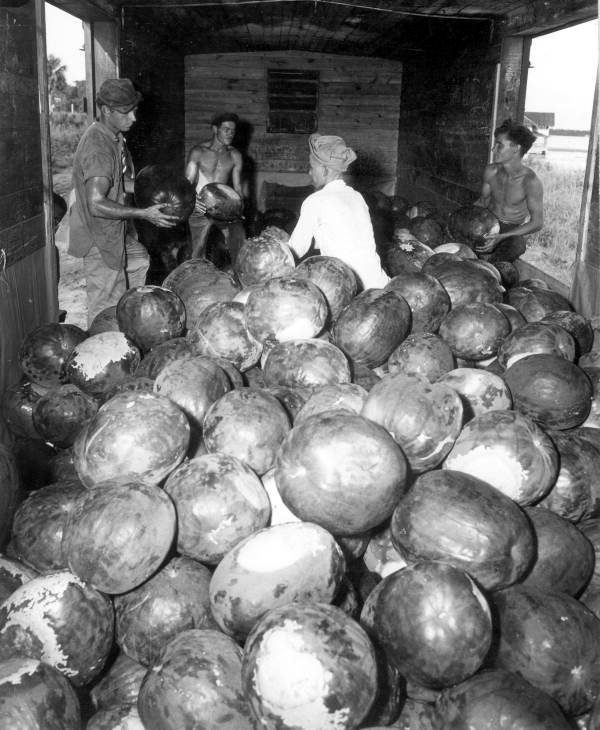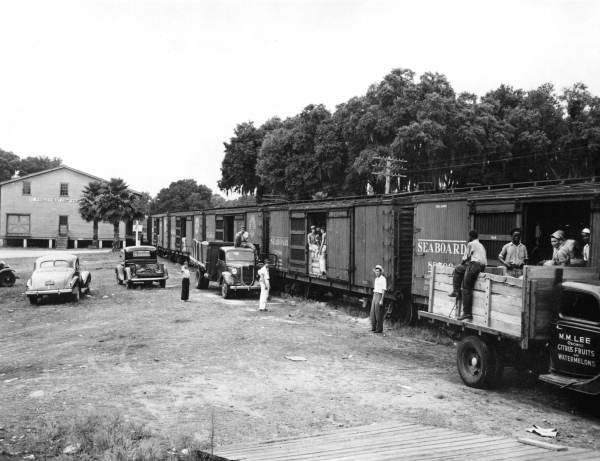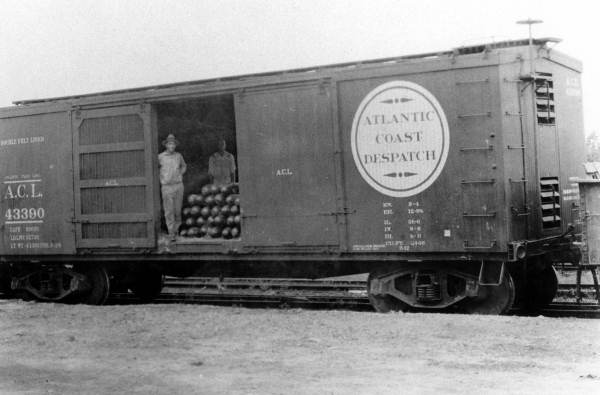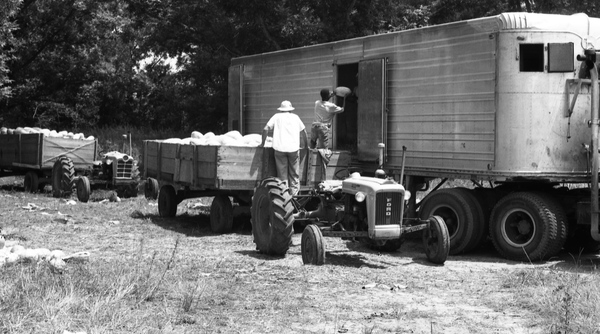Description of previous item
Description of next item
The Watermelon Special
Published July 7, 2019 by Florida Memory
When the weather is hot and you’re craving something sweet but refreshing, there’s nothing like a big slice of Florida watermelon. That’s true whether you happen to be in Florida or on the other side of the country, so an important part of Florida’s watermelon industry has always been adequate transportation. These days, Florida watermelons usually get where they’re going by truck, but it hasn’t always been that way. In the old days, well before the age of expressways and 18-wheelers, trains were the main way of getting watermelons from the farm to faraway markets. At peak harvest time in June and July, the supply of watermelons often exceeded the capacity of ordinary trains to handle the crop. The solution? Enter the “watermelon special.”

Watermelon slices ready for a watermelon eating contest at the Florida Folk Festival in White Springs (1986).
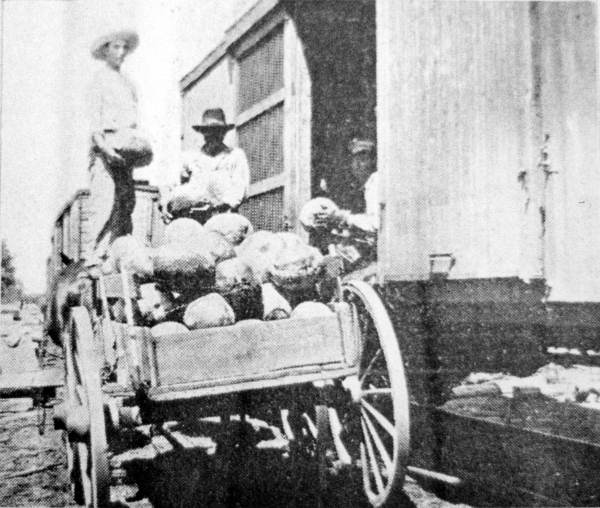
Men loading watermelons into a car on the Live Oak, Perry & Gulf Railroad in Suwannee County (ca. 1914).
Watermelon specials were extra trains that ran in between normally scheduled trains to pick up melons from stations all along the railroad. Most of these weren’t actually stations, just side-tracks or “sidings” that allowed the train to stop long enough to pick up cargo or drop off empty cars for loading and move on. Farm workers would bring their crops up to the empty cars on the sidings and load the melons one by one, packing them carefully to avoid bruising or splitting. Sometimes sawdust or straw were used for extra cushioning, and the general rule was never to stack them more than four melons high. These watermelon loaders may have missed that memo:
Watermelon was (and is) a big business for Florida farmers. Even as early as 1890, Floridians planted 2,678 acres of melons, which produced 1,491 carloads valued at $95,950. That was a lot of money in those days, roughly equivalent to $2.7 million in 2018 money. In modern times, watermelon production has increased exponentially. In the 2010-2011 season, Florida growers harvested 24,400 acres of melons valued at $111.9 million. We say the 2010-2011 season because Florida is the only U.S. supplier of watermelons that can market them in December, although the bulk of the crop still comes in from May to July.
It was profitable for railroads too. Some companies, like the Georgia & Florida Railroad, even provided circulars to farmers offering the latest advice on methods for growing, fertilizing and harvesting melons. After all, the more melons the farmers produced, the more cargo the railroads would have to ship. The G&F also aimed to get more people eating watermelon by praising its nutritional value in public service announcements. Under the headline “Eat a Slice of Melon a Day!” company president Hugh Purvis urged readers to take advantage of all the benefits of watermelon during its peak season.
The only constant is change, of course, and the days of the watermelon special came to a close as truck transportation became cheaper and faster. Trucks and the trailers they carried could go directly to the fields to load in multiple locations–a feat the railroads simply couldn’t match. Many railroad companies stopped shipping watermelons in the 1950s and 1960s, or ran watermelon specials only in especially heavy years when even the trucks had trouble keeping up with the harvest.
Cite This Article
Chicago Manual of Style
(17th Edition)Florida Memory. "The Watermelon Special." Floridiana, 2019. https://www.floridamemory.com/items/show/342061.
MLA
(9th Edition)Florida Memory. "The Watermelon Special." Floridiana, 2019, https://www.floridamemory.com/items/show/342061. Accessed February 26, 2025.
APA
(7th Edition)Florida Memory. (2019, July 7). The Watermelon Special. Floridiana. Retrieved from https://www.floridamemory.com/items/show/342061

 Listen: The World Program
Listen: The World Program